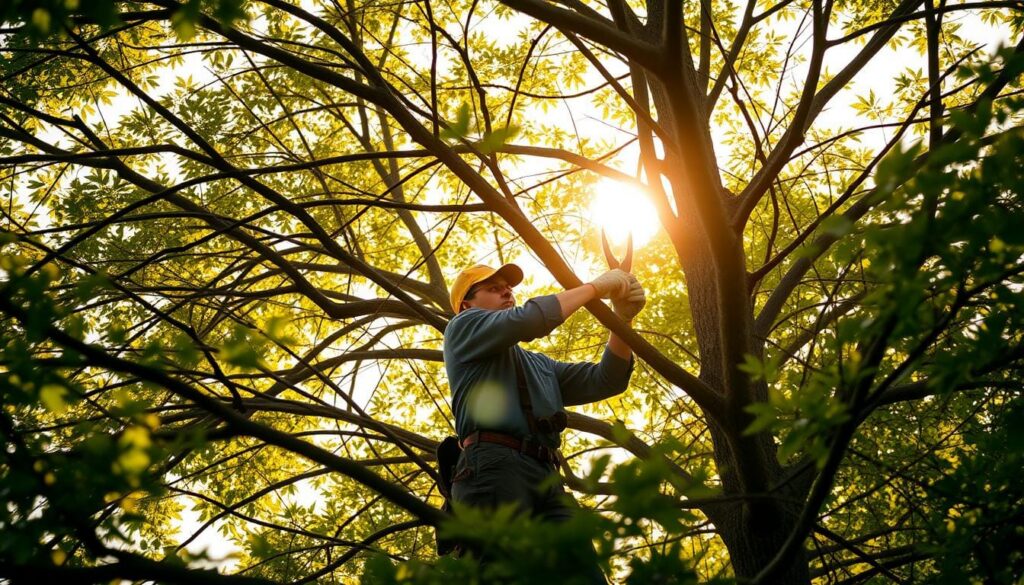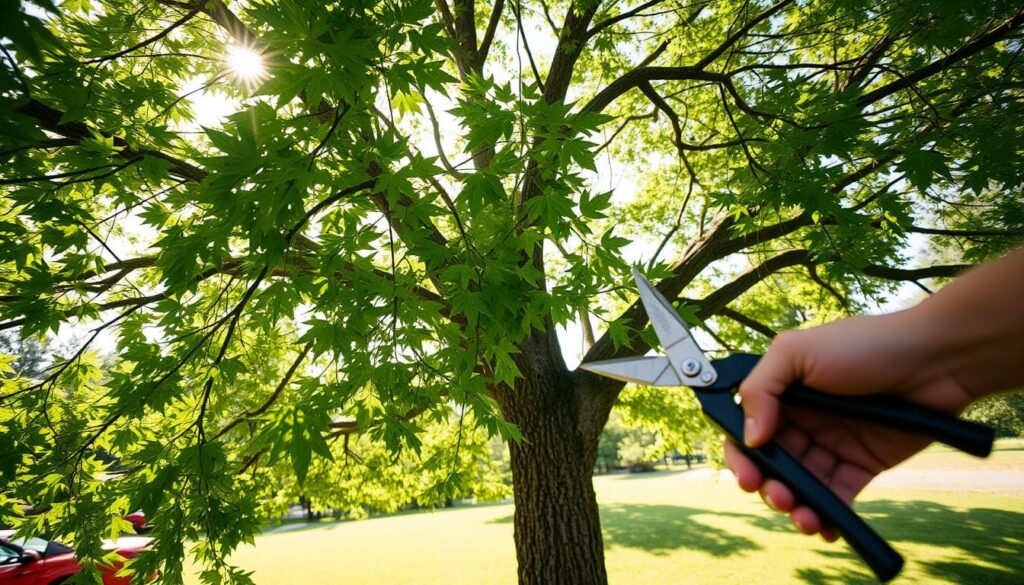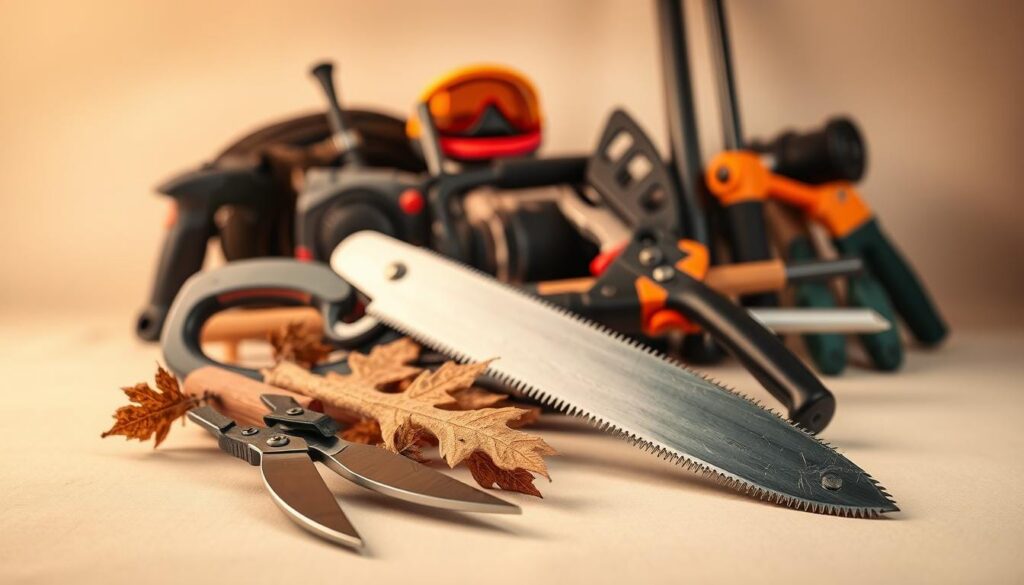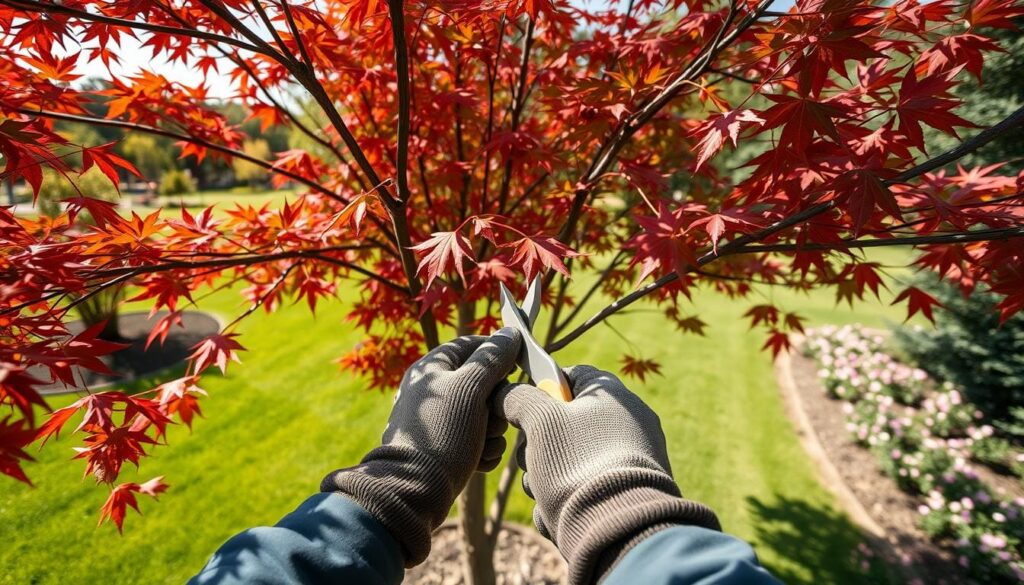Maintaining the health and aesthetics of maple trees requires careful consideration, particularly when it comes to pruning. These beautiful trees are known for their stunning foliage and majestic presence in landscapes.
Pruning is essential for maintaining the structural integrity of maple trees. However, the timing of pruning is crucial to prevent stress, disease, and excessive sap loss. Unlike other deciduous trees, maple trees have specific care requirements due to their sap production and growth patterns.
This comprehensive guide will cover not only the optimal timing for pruning but also the techniques, tools, and special considerations for different maple varieties. By the end of this article, readers will be equipped with the knowledge to identify when their maple tree needs pruning and how to do it correctly.
Key Takeaways
- Understand the importance of proper pruning for maintaining the health and aesthetics of maple trees.
- Learn how timing affects the pruning process and the potential consequences of improper timing.
- Discover the specific care considerations for maple trees compared to other deciduous trees.
- Gain insights into the techniques and tools required for effective pruning of different maple varieties.
- Identify the signs that indicate your maple tree needs pruning.
Understanding Maple Tree Pruning Basics

The art of pruning maple trees involves more than just cutting branches; it’s about enhancing the tree’s health and beauty. Pruning maple trees is essential for maintaining their health and structural integrity. Regular pruning removes dead, diseased, or weak branches, reducing the risk of accidents caused by falling limbs.
Why Pruning is Essential for Maple Trees
Pruning is crucial for tree care as it enhances the tree’s appearance by shaping it, removing unsightly branches, and promoting a more balanced canopy. Proper pruning encourages new growth by stimulating dormant buds. According to experts, regular pruning helps maintain the structural integrity of maple trees by removing weak, damaged, or poorly positioned branches.
How Pruning Affects Maple Tree Health and Growth
Pruning affects maple tree health by improving air circulation and enhancing sunlight penetration throughout the tree’s canopy. This process also helps in disease prevention and stress reduction. A well-pruned maple tree exhibits a more balanced and visually pleasing canopy structure.
| Pruning Benefit | Description |
|---|---|
| Structural Integrity | Removes weak or damaged branches, reducing the risk of accidents. |
| Aesthetic Appeal | Enhances the tree’s appearance by creating a balanced canopy. |
| Disease Prevention | Improves air circulation and reduces disease susceptibility. |
When is the Best Time to Prune a Maple Tree

The best time to prune maple trees is a critical factor in their care and maintenance. Pruning at the right time ensures the tree’s health and longevity.
Late Winter to Early Spring: The Ideal Pruning Window
Late winter to early spring, typically from February to early March, is considered the ideal time for major maple tree pruning. During this period, the tree is dormant, which minimizes sap loss and allows the tree to heal quickly before the growing season begins. Pruning during the late winter or early spring also makes it easier to assess the tree’s structure without the foliage. This dormancy period is crucial as it maximizes the tree’s healing potential and reduces the risk of disease transmission.
- The tree is less stressed when pruned during its dormant season.
- Pruning before new growth starts helps in shaping the tree.
Late Summer Pruning: When and Why It Works
For maple trees that bloom in late spring or early summer, some maintenance pruning can be performed in late summer, around July or August. This timing is suitable for light maintenance pruning and deadwood removal. Late summer pruning allows for a second assessment of the tree’s structure after the leaves have matured, making it easier to identify and remove any dead or damaged branches.
Seasons to Avoid Pruning Maple Trees
It’s essential to avoid heavy pruning during certain seasons. Pruning in early spring when the sap is actively flowing can result in excessive sap bleeding, stressing the tree. Similarly, pruning in the fall can be detrimental as decay fungi are most active during this time, potentially leading to disease. Understanding these seasonal considerations is key to maintaining the health of your maple tree.
- Avoid pruning in early spring due to active sap flow.
- Refrain from pruning in fall to minimize disease risk.
Signs Your Maple Tree Needs Pruning
Knowing the signs that indicate your maple tree needs pruning can make a significant difference in its overall well-being. Regular inspection is key to identifying issues before they become major problems.
Identifying Dead or Diseased Branches
Dead or diseased branches are not only unsightly, but they can also pose a risk to the overall health of your maple tree. Look for branches with lack of leaf growth, brittle wood, or signs of fungal growth and insect activity. These are clear indicators that pruning is necessary to prevent the spread of disease and encourage healthy growth.
Structural Issues That Require Attention
Structural issues such as crossing branches, included bark, and co-dominant stems can compromise the stability of your tree. These issues can lead to significant problems if not addressed. Pruning can help mitigate these risks by removing problematic branches, thereby ensuring the structural integrity of your maple tree.
- Crossing branches that rub against each other
- Included bark that can weaken branch unions
- Co-dominant stems that can lead to branch failure
Growth Patterns That Benefit from Pruning
Certain growth patterns can benefit significantly from strategic pruning. This includes water sprouts, suckers, and overly dense canopy areas. Pruning these growths can improve the overall shape and health of your maple tree, promoting a more balanced growth and reducing the risk of disease and pests.
Essential Tools for Proper Maple Tree Pruning

Pruning a maple tree requires the right tools to ensure the job is done effectively and safely. Proper pruning techniques not only enhance the tree’s appearance but also contribute to its overall health and longevity.
Hand Pruners, Loppers, and Pruning Saws
For effective maple tree pruning, you’ll need a variety of cutting tools. Hand pruners are ideal for small branches under ¾ inch in diameter, allowing for precise cuts. Loppers are used for branches up to 2 inches in diameter, providing more leverage for thicker limbs. For larger branches, a pruning saw is necessary, enabling clean cuts on bigger limbs. Maintaining these tools is crucial; they should be kept sharp and clean to prevent spreading diseases.
Safety Equipment You Shouldn’t Skip
Safety should be a top priority when pruning your maple tree. Essential safety equipment includes gloves to protect your hands from thorns and splinters, eye protection to safeguard against debris, and helmets to protect your head from falling branches. Wearing proper footwear with good traction is also important to prevent slipping while pruning. For larger trees or complex pruning tasks, consider hiring professional tree services to ensure the job is done safely and correctly.
Step-by-Step Guide to Pruning Maple Trees

The art of pruning maple trees involves a systematic approach that includes preparation, precise cutting techniques, and post-pruning care. To achieve the best results, it’s essential to follow a step-by-step guide that covers all aspects of the pruning process.
Preparing for the Pruning Process
Before you start pruning your maple tree, assess the tree’s overall health and structure. Identify any dead, diseased, or damaged branches that need removal. Choose the right tools for the job, such as pruning shears for smaller branches and a pruning saw for larger ones. Plan your cuts carefully to avoid over-pruning, which can stress the tree.
Making Proper Cuts: Techniques and Angles
When making cuts, it’s crucial to cut outside the branch collar, the swollen area where the branch meets the trunk. This technique helps preserve the tree’s natural healing mechanisms. For smaller branches, use pruning shears or loppers to make clean cuts. The angle of the cut is also important; it should be made at a slight angle, just outside the branch collar, to facilitate healing.
Removing Large Branches Safely
For larger branches, use the three-cut method to avoid damaging the trunk. First, make a notch cut on the underside of the branch about a foot from the trunk. Then, make a second cut from the top, just outside the notch, to remove the branch. Finally, make a third cut outside the branch collar to remove the stub, ensuring a clean cut that promotes healing.
Post-Pruning Care for Optimal Healing
After pruning, monitor the tree for signs of stress or disease. Keep the area around the tree clean and free of debris to prevent the spread of disease. Proper disposal of pruned material is also crucial; check local regulations for guidelines on how to dispose of yard waste. By following these steps, you can help ensure your maple tree heals quickly and remains healthy.
Common Maple Tree Pruning Mistakes to Avoid
The art of pruning maple trees is nuanced, and avoiding common pitfalls is crucial for maintaining the tree’s well-being. Pruning is not just about cutting branches; it’s about doing so in a way that promotes the health and structural integrity of the maple tree.
Over-Pruning: The 25% Rule
One of the most significant mistakes is over-pruning. Removing more than 25% of a maple tree’s canopy in a single session can severely stress the tree, impairing its ability to recover. This excessive pruning can lead to disease susceptibility and pest infestations, ultimately risking the tree’s health.
Improper Cutting Techniques
Tree pruning requires proper cutting techniques. Flush cuts, stub cuts, and tearing cuts can lead to decay, disease entry, and poor healing. Using the correct cutting tools and methods is vital to prevent unnecessary damage to the maple tree.
Pruning During Vulnerable Seasons
Avoid pruning maple trees in the fall, as the wet conditions and falling leaves create an ideal environment for various diseases and pests diseases. Similarly, pruning during early spring when the tree is experiencing sap flow can be detrimental. Understanding the right time to prune is crucial for the tree’s health.
By being aware of these common mistakes, homeowners can take steps to avoid them, ensuring their maple tree remains healthy and thrives. Proper prune maple techniques not only enhance the tree’s appearance but also contribute to its longevity.
Special Considerations for Different Maple Varieties
To prune maple trees successfully, it’s crucial to consider the specific characteristics of each variety. Different maple species exhibit unique growth patterns, branch structures, and responses to pruning, making it essential to tailor pruning techniques accordingly.
Japanese Maple Pruning Tips
Japanese maples are known for their delicate nature and ornamental value. When pruning Japanese maples, it’s essential to maintain their natural shape and promote healthy growth. Prune in late winter or early spring, removing any dead or damaged branches. Use sharp, clean tools to prevent spreading disease, and make cuts just above a growth node to encourage new growth.
Sugar, Red, and Silver Maple Pruning Differences
Sugar, red, and silver maples have different growth rates and branch structures, influencing their pruning needs.
| Maple Variety | Growth Rate | Pruning Needs |
|---|---|---|
| Sugar Maple | Moderate | Regular pruning to maintain shape and promote healthy growth |
| Red Maple | Fast | More frequent pruning to control size and structure |
| Silver Maple | Fast | Pruning to remove weak branches and maintain structural integrity |
Conclusion: Maintaining Healthy Maple Trees Through Proper Pruning
To keep your maple trees healthy and thriving, understanding the best pruning practices is vital. Proper pruning enhances their appearance and promotes overall health and longevity. The ideal times for pruning maple trees are late winter to early spring and sometimes late summer, as these periods support optimal healing and minimize stress.
Regular, properly executed pruning contributes to the long-term health, structural integrity, and aesthetic value of your trees. For complex situations or large, mature maple trees, consider consulting professional arborists who can provide expert tree care and tree services. Ongoing care, including watering, fertilization, and health monitoring, is also crucial. By applying the knowledge gained from this guide, you can maintain beautiful, healthy maple trees for generations to come. For more detailed guidance on when to trim maple trees, visit our resource page.

